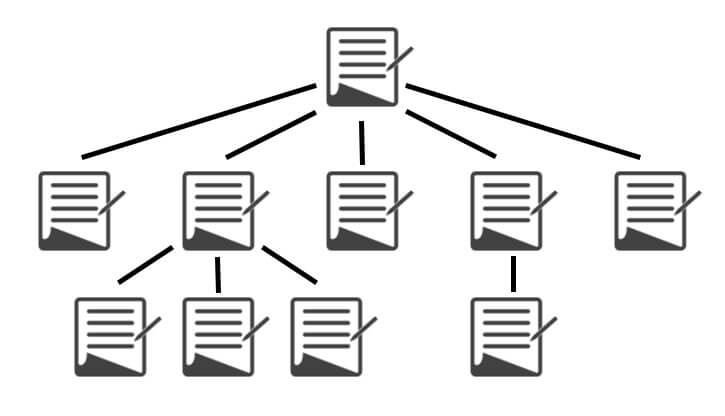The SEO benefits of developing a solid site structure
Columnist Ryan Shelley explains why a good site structure can be highly beneficial for your search engine optimization efforts -- and your users.

When a user lands on your site for the very first time, do they know where to go? Can they find the information they are searching for quickly, without having to search deep into your site? While site structure may not be a large factor when it comes to most ranking algorithms, search engines use the structure of your site to better understand your content and the relationships between subjects on your site.
There are so many factors that impact your site’s online visibility. We often talk about content, links and other optimization tweaks we can use to get results. One area that we often overlook is the structure of the website we are working on. Having a well-organized site will not only help your users find what they are looking for faster, but it will also help crawlers better understand your site’s content and purpose.
Flat vs. deep site structures
The two most common types of site structure are deep and flat. Deep sites create a long path of links to access detailed content. Flat structure requires a minimal number of clicks to access any page.
According to “The Art of SEO” by Eric Enge, Stephan Spencer and Jessie Stricchiola, “For nearly every site with fewer than 10,000 pages, all content should be accessible through a maximum of four clicks from the home page and/on sitemap page.”
With deep site structures, not only does it take a user longer to find the content they are looking for, but it can also take the search crawlers longer to find your content. A flat site structure makes it easier for search engines to find and index your site, and it has great benefits for the users as well. It limits the number of pages a user has to pass through to find the content they are looking for (which, in theory, results in greater engagement with your site).
Building a structure that makes sense
When building a site structure, there is a lot more that goes into it than just making it “flat.” SEOs are tasked with structuring the site in a way that helps crawlers understand the content of your site. Search engines are collecting huge amounts of data every day and are working to make sense of it all. Instead of having them “guess” about the relative importance of pages on your site, you can direct them with the proper site structure.
While search engines are getting more advanced and can build semantic relationships between topics, the more we can help them the better. Break down your content in a way that makes logical sense. Start by breaking your content into core categories, then work your way down into logical subcategories from there.
This, again, has a positive impact for crawlers and users alike. Your users can more easily find the content they need, and search engines can better understand your site.
Navigation and sitemaps
The two most visible representations of your site structure are found in your navigation and your sitemap.
Navigation
When creating your site’s navigation, you want to think about both your users and the search crawlers. As we shared above, a flat site structure will help both your users and the crawlers find your content faster.
Having clear and easy-to-use navigation is an important aspect of any site. Building a navigation should not be rushed. Take time to think about your content, your themes and categories, and use cards to test different navigation flows before just throwing one together.
I would suggest you follow these six steps, as laid out in “The Art of SEO”:
- List all the requisite content pages (blogs, articles, product detail pages and so on)
- Create top-level navigation that can comfortably hold all of the unique types of detailed content for the type.
- Reverse the traditional top-down process by starting with the detailed content and work your way to an organizational structure capable of holding each page.
- Once you understand the bottom, fill in the middle. Build out a structure for sub-navigation to sensibly connect top-level pages with detailed content. In small sites, there may be no need for this level, whereas in larger sites, two or even three levels of sub navigation may be required.
- Include secondary pages such as copyright, contact information and other nonessentials.
- Build a visual hierarchy that shows (to at least the last level of sub-navigation) each page of the site.

Sitemaps
While many sites have HTML sitemaps, most today just use XML sitemaps. An XML sitemap provides a list of URLs on your site, and you can submit your XML sitemap(s) to many major search engines to indicate which pages you would like to have crawled. (Note that including a URL in your sitemap does not guarantee that it will be indexed, but it does make it easier for search engines to find and crawl the page.)
Having both an HTML sitemap and an XML sitemap is recommended. XML sitemaps are designed for use by search engines, while HTML sitemaps are designed for use by humans. Matt Cutts, former Google head of webspam, says, “Once you make an HTML sitemap, making an XML version is extremely easy. So my advice? Do both, if possible.”
Building a sitemap is not difficult, especially once you have your site structure together. For your HTML sitemap, you’ll create a new HTML page on your site with a hierarchical list of all your URLs. This will reflect your site’s navigation.
For XML, you can use a number of tools like https://www.xml-sitemaps.com/ or WordPress plugins to create your sitemaps. Be careful using these tools, because you may not want to include everything in your sitemap. You may want to exclude login pages, pagination pages or pages that have low value.
Final thoughts
SEO is more than just content and links. There are a number of moving pieces that impact your site’s visibility. Taking the time to build a solid information structure will pay off in the long run. Know who your users are, and structure your site in a way that makes it easy for them to find the content they need. In doing this, you will also create a structure that makes it easy for the crawlers to understand your site. The better your content is consumed and understood by both your users and crawlers, the more visibility your site will have.
Contributing authors are invited to create content for Search Engine Land and are chosen for their expertise and contribution to the search community. Our contributors work under the oversight of the editorial staff and contributions are checked for quality and relevance to our readers. The opinions they express are their own.
Related stories